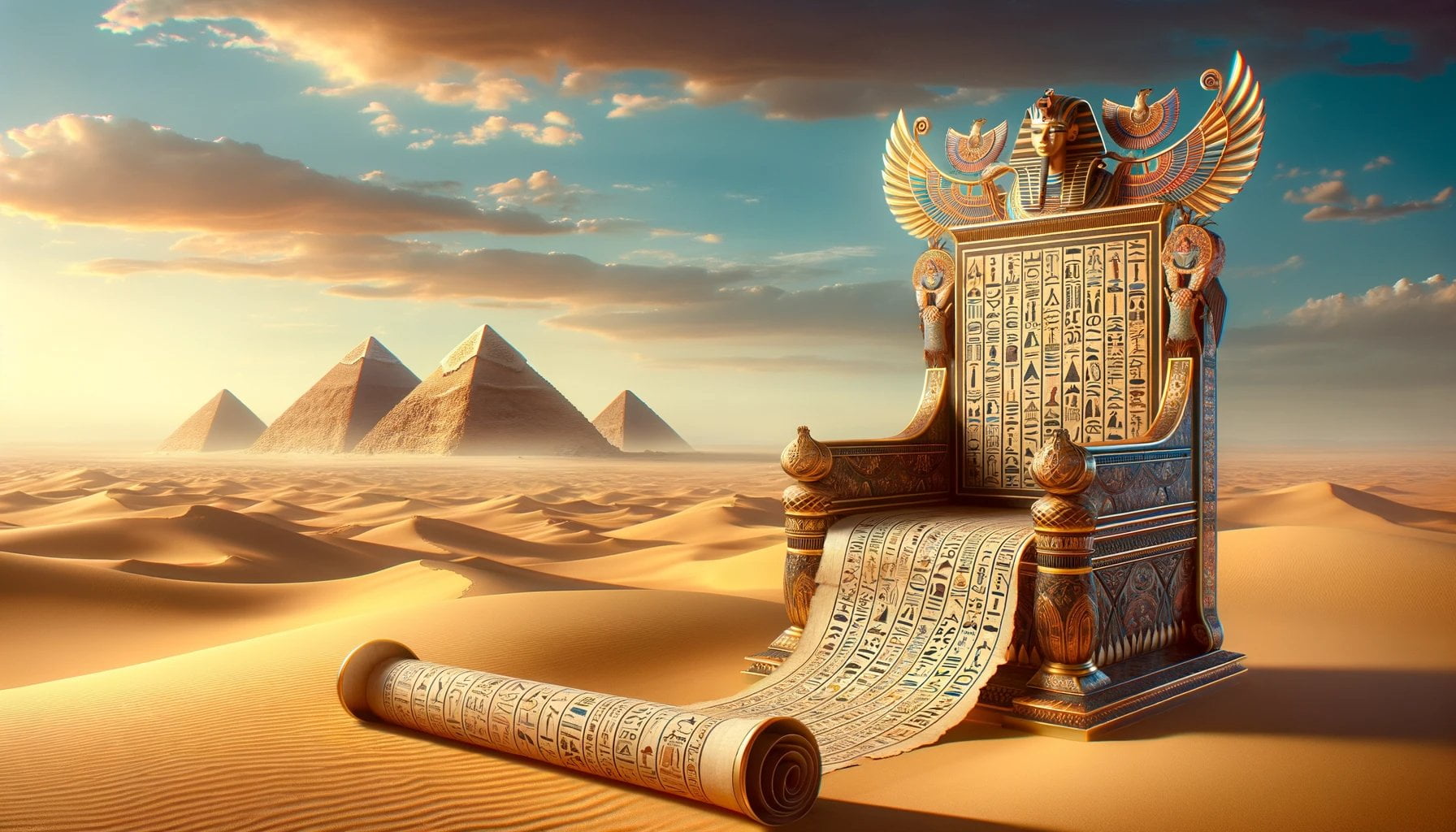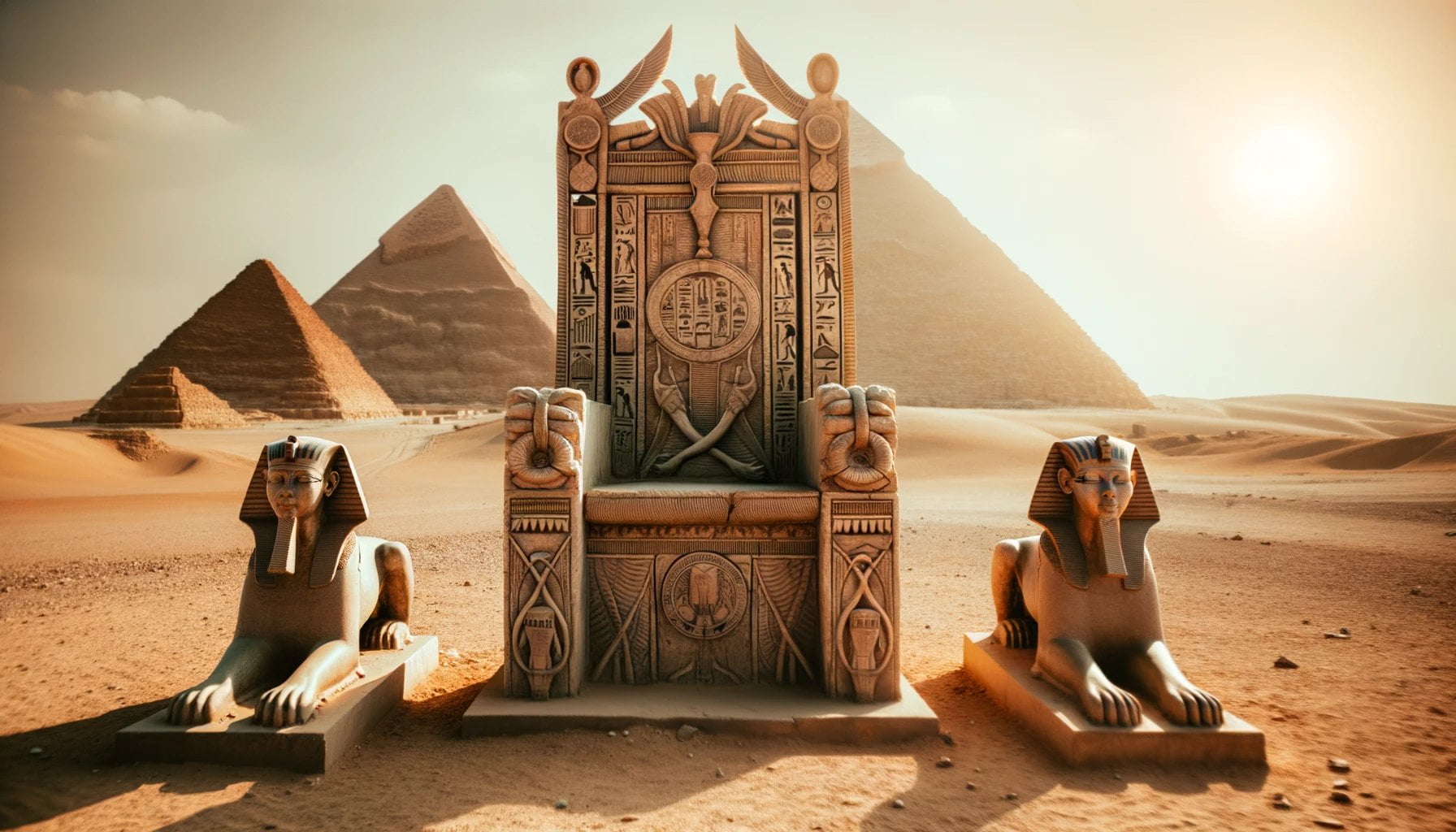As we delve into the captivating world of ancient Egypt, one cannot overlook the fascinating allure surrounding the names of its queens. In this article, we will embark on an enlightening journey to uncover the secrets behind these ancient Egyptian queen names. With expertise in deciphering hieroglyphics and a profound understanding of the cultural context, we will unveil the historical significance and societal roles attached to these enchanting names. Join us as we unravel the mysteries of the queens who once ruled over one of the world’s most intriguing civilizations.
Key Takeaways:
– Arsenal was one of the last queens of Egypt and played a crucial role in civil wars.
– Berenice was the first queen of the Ptolemaic dynasty of Egypt.
– Cleopatra is a name that several queens of Egypt have held.
– Hatshepsut was a queen-pharaoh of the 18th dynasty of Egypt.
– Kama is believed to be King Osorkon III’s mother.
– Queen Nithotep is the earliest discovered Egyptian queen.
– Queen Merit Nate inherited the throne after her husband’s death and was one of the first family’s rulers.
– Hetepheres I, Queen of the Fourth Dynasty, was the daughter of the final king of the Third Dynasty.
– Queen Hanutsen’s name means “their lady” in Egyptian.
Ancient Egyptian Queen Names

Ancient Egypt, with its rich history and fascinating culture, is home to a plethora of remarkable queens who left an indelible mark on the civilization. These ancient Egyptian queen names not only reflect the historical significance of each ruler but also provide insights into societal norms and values of the time.
Arsinoe: The Last Queens of Egypt
Arsinoe is one of the last queens of Egypt and played a pivotal role in the complex civil wars that engulfed the kingdom. Her name holds a story of power, determination, and resilience. As we delve into the intricacies of her name, we uncover a queen who rose above the challenges and fought valiantly to maintain her position and protect her people.
Berenice: The First Queen of the Ptolemaic Dynasty
Berenice, the name synonymous with the beginning of the influential Ptolemaic dynasty, symbolizes a new era in ancient Egyptian history. Her name encompasses the hopes and aspirations of a kingdom in transition. As we explore the layers of Berenice’s name, we uncover the stories of conquests and alliances that shaped her reign and solidified her place in history.
Cleopatra: A Legacy of Queens
Cleopatra, a name that resonates through the annals of ancient Egyptian history, is associated with several queens who ruled the kingdom. From the captivating Cleopatra VII, known for her political acumen and alliances, to the enigmatic Cleopatra II, who navigated turbulent times, these queens cemented their place as powerful leaders. The name Cleopatra evokes tales of intrigue, romance, and political maneuvering.
Hatshepsut: The Queen-Pharaoh of Egypt
Hatshepsut, the queen-pharaoh of the illustrious 18th dynasty, is a name shrouded in mystery and awe. This powerful ruler challenged societal norms and took on the role traditionally reserved for kings. Hatshepsut’s name reflects her unprecedented reign, showcasing her determination to leave a lasting imprint on Egyptian history.
Kama: The Royal Mother
Kama, although lesser-known, holds great historical significance. Experts believe she was the mother of King Osorkon III, highlighting the influential role of royal mothers in ancient Egyptian society. Kama’s name, when deciphered, offers insights into the close familial ties and the essential lineage of the pharaohs.
Queen Nithotep: The Earliest Discovered Queen
Queen Nithotep, the earliest Egyptian queen unearthed by historians, represents a bridge between ancient Egyptian civilization and its nascent beginnings. Her name holds the secrets of a time long lost, shedding light on the social structures and cultural norms that laid the foundation for the queens to come.
Queen Merit Nate: A Regent’s Resilience
Queen Merit Nate, one of the first family rulers, rose to prominence after inheriting the throne following her husband’s death. Her name embodies the resilience required to navigate the challenges faced by regents during a time of transition. Through an exploration of Merit Nate’s name, we gain insights into the complex dynamics of power and succession within the ancient Egyptian monarchy.
Hetepheres I: Queen of the Fourth Dynasty
Hetepheres I, queen of the ancient Fourth Dynasty, was the daughter of ruler Huni, the final king of the Third Dynasty. Her name carries the weight of lineage and heritage, representing a continuity of power across dynasties. Exploring Hetepheres I’s name allows us to delve into the royal connections and familial ties that shaped ancient Egyptian society.
Queen Hanutsen: The Lady in History
Queen Hanutsen, with her name meaning “their lady” in ancient Egyptian, reflects the significant roles of queens within the society. While her reign may not have been as renowned as others, Hanutsen’s name reminds us of the diverse facets of queenship and the impact these queens had on the lives of their subjects.
By unraveling the mysteries behind these ancient Egyptian queen names, we gain a deeper understanding of the historical context in which these remarkable women lived. Each name tells a captivating story of power, resilience, and societal norms, showcasing the intricate tapestry of ancient Egyptian civilization.
Note: The list of ancient Egyptian queens provided is not exhaustive but offers a glimpse into the diversity and complexity of these influential women throughout history. For further exploration and comprehensive insights, additional research is recommended.
If you are curious about the largest naval battle in ancient history, click here to uncover the thrilling details.
For a glimpse into the majestic palaces in ancient Egypt, click here and immerse yourself in their grandeur.
Discover heartwarming stories of ancient dog epitaphs by clicking here and paying tribute to these loyal companions.
Unveil the wonders of an ancient city in Peru by clicking here and exploring its rich history and remarkable architecture.
Step into the world of ancient Vietnamese warriors by clicking here and relive their heroic deeds.
For an intriguing look into ancient Syrian names, click here and unravel their fascinating meanings and origins.
Unleash your inner royalty by discovering ancient queen names here and embracing their regal allure.
Journey through time and witness ancient Persian inventions by clicking here and marveling at their ingenuity.
Explore the remarkable achievements of ancient Romans here and be inspired by their contributions to civilization.
Embark on a virtual tour of ancient castles in Africa by clicking here and experiencing their majestic splendor.
Transport yourself to the captivating world of ancient Greek castles here and immerse yourself in their rich history and breathtaking architecture.
Discover the secrets of an ancient Italian city by clicking here and uncovering its hidden treasures and enchanting stories.
Unveiling the Mysteries: Ancient Egyptian Queen Names
The role of ancient Egyptian queen names in societal structures and cultural norms is a fascinating subject that offers valuable insights into the civilization of ancient Egypt. By delving into the significance of these names, we can uncover the historical and social contexts in which these powerful women lived. Join me on this journey as we explore the intriguing world of ancient Egyptian queen names.
The Importance of Queen Names in Ancient Egyptian Society
In ancient Egypt, queen names held deep cultural significance and were closely intertwined with societal structures. The names bestowed upon these queens reflected not only their individual identities but also their roles within the social hierarchy. These names provide us with a window into the values, norms, and aspirations of ancient Egyptian society.
Ancient Egyptian queen names often represented qualities and attributes that were highly esteemed in their culture. For example, the name “Nefertiti” means “the beautiful one has come.” This name reflects the ideal of feminine beauty that was revered and valued in Egyptian society.
Societal Structure and Gender Roles in Ancient Egypt
To understand the role of queen names, we must first explore the social structure and gender roles in ancient Egypt. Women in ancient Egypt enjoyed a relatively high status, with equal rights to men in most aspects of life. They held diverse positions such as doctors, scribes, brewers, dancers, and property managers.
Queen names played a crucial role in maintaining the social order within the hierarchy. The kings of ancient Egypt, as the upholders of ma’at (balance), relied on the queens to fulfill their roles in society. By examining the names of these queens, we can gain insight into the expectations placed upon them and their contributions to Egyptian society.
Unraveling the Meaning of Queen Names
Each ancient Egyptian queen name has its own unique significance, allowing us to decipher the cultural and historical context in which it emerged. For instance, the name “Cleopatra” is associated with several queens who displayed political acumen and formed alliances to secure power. By analyzing the name’s meaning and historical context, we can gain a deeper understanding of the queens’ influence and strategies.
Furthermore, queen names also reflected the resilience and strength of these regents. Names like “Merit Nate” embodied the inheritance of power across dynasties, emphasizing the continuity and endurance of their rule. “Hetepheres I” symbolized the continuity of power and the importance of lineage in ancient Egypt.
Discovering the Legacy of Ancient Egyptian Queen Names
The legacy of ancient Egyptian queen names extends far beyond the individual queens themselves. These names provide a connection to the past and serve as a reminder of the remarkable women who played significant roles in ancient Egyptian society. By understanding the cultural and societal factors that influenced these names, we can gain a deeper appreciation for the richness and complexity of ancient Egyptian civilization.
Key Takeaways:
- Ancient Egyptian queen names reflected societal structures and cultural norms.
- Queen names represented qualities and attributes highly esteemed in ancient Egyptian culture.
- Women in ancient Egypt held diverse positions and enjoyed relatively high status.
- Queen names played a crucial role in maintaining the social order within the hierarchy.
- Analyzing queen names offers insights into the expectations and contributions of queens in ancient Egyptian society.
- Queen names provide a connection to the past and highlight the remarkable women of ancient Egypt.
Sources:
– World History Encyclopedia – Social Structure in Ancient Egypt
– Women in Ancient Egypt – World History Encyclopedia
Deciphering the Meanings Behind Ancient Egyptian Queen Names Through Linguistic Analysis
Ancient Egypt is an enchanting realm filled with captivating history and remarkable queens who left an indelible mark on civilization. The names of these queens hold significant meanings that offer insights into their historical significance and societal norms. By delving into the linguistic analysis of ancient Egyptian queen names, we can unravel the mysteries behind these captivating titles.
The names of ancient Egyptian queens were often imbued with connections to gods, goddesses, or other aspects of Egyptian culture. Through linguistic analysis, we can decode the hidden meanings behind these names and gain a deeper understanding of the queens and the roles they played in ancient Egyptian society.
Amunet, for example, means “hidden” or “secretive” and derives its roots from the god Amun. This name reflects the mysterious nature associated with certain queens, reminding us of the intrigue surrounding their reigns. On the other hand, the name Bastet is inspired by the feline goddess of home, fertility, and protection. This choice of name showcases the importance of these qualities in ancient Egyptian society and highlights the role of the queen as a guardian and nurturer of the kingdom.
Another intriguing example is Khufu, the name of the pharaoh who built the Great Pyramid of Giza. By understanding the meaning of his name, we can grasp the ambition and architectural prowess of this esteemed ruler.
Nefertari, whose name translates to “beautiful companion,” was a beloved queen who held a special place in the hearts of the Egyptian people. This name resonates with the reverence and admiration that the queen garnered throughout her reign.
Seti, meaning “the one of Seth,” refers to the god of chaos. This name hints at the complexities and challenges that may have characterized the reign of the queen bearing this title, as well as the role of divine protection in navigating such turbulent times.
The ancient scripts of Egypt have posed a challenge in their decipherment, requiring various methods and theories to unlock their secrets. Researchers have referenced ancient material, turned to known languages like Greek for comparisons, and even relied on trial and error. Institutions like the British Museum and informative platforms like Wikipedia have contributed valuable resources in this ongoing process of deciphering ancient Egyptian scripts.
The decipherment of ancient Egyptian queen names through linguistic analysis not only sheds light on the names themselves but also offers a deeper understanding of the expectations, contributions, and societal roles of these queens. It provides a connection to the past and highlights the remarkable women who played vital roles in shaping ancient Egyptian civilization.
Key Takeaways:
– Ancient Egyptian queen names often have significant meanings related to gods, goddesses, or other aspects of Egyptian culture.
– Linguistic analysis allows us to decipher the hidden meanings behind these names, offering insights into the historical significance of the queens.
– The British Museum and Wikipedia provide valuable resources on the decipherment of ancient Egyptian scripts.
– Decoding ancient Egyptian queen names through linguistic analysis offers a deeper understanding of their roles, societal expectations, and cultural norms.
– The names reflect the qualities and attributes highly esteemed in ancient Egyptian culture, providing a connection to the remarkable women of ancient Egypt.
The Enduring Legacy of Ancient Egyptian Queen Names and Their Impact on Modern Culture
The Queens of Ancient Egypt – Nefertiti, Hatshepsut, and Cleopatra – have left an indelible mark on history. Their names evoke images of power, beauty, and intrigue, captivating researchers, historians, and artists for centuries. In this article, we will delve into the fascinating world of ancient Egyptian queen names and explore their enduring legacy in modern culture.
Unraveling the Names of Ancient Egyptian Queens
Ancient Egyptian queen names were imbued with deep meaning and reflected the societal norms and cultural values of the time. Each name held significance, telling a story of power, lineage, and aspirations. By decoding the ancient hieroglyphics, we can uncover hidden meanings and gain insights into the lives and roles of these remarkable women.
The Historical Significance of Queen Names
Queen names in ancient Egypt were more than mere labels; they carried historical and religious connotations. For example, the name “Nefertiti” means “the beautiful one has come forth,” a fitting choice for a queen renowned for her beauty. These names represented qualities highly esteemed in ancient Egyptian society, such as beauty, strength, fertility, or wisdom.
Cultural Impact of Ancient Egyptian Queen Names
The legacy of ancient Egyptian queen names extends far beyond the historical period. These names continue to inspire and influence modern culture in various ways. From literature to art, fashion to popular culture, the allure of Nefertiti, Hatshepsut, and Cleopatra resonates with people around the world.
Bold Keyword: The enduring legacy of ancient Egyptian queen names and their impact on modern culture
Queen Names in Literature and Art
Ancient Egyptian queen names have found their way into numerous literary works, serving as symbols of power and beauty. They evoke images of grandeur, mystery, and enchantment. In art, the iconic representations of Nefertiti, with her striking features and elegant headdress, have become iconic symbols of feminine beauty and grace.
Fashion and Queen Names
The influence of ancient Egyptian queen names can also be seen in the world of fashion. Designers have drawn inspiration from the elegance and opulence associated with these queens, incorporating elements of ancient Egyptian style into their creations. From intricate jewelry to flowing gowns, the regal aura of Nefertiti, Hatshepsut, and Cleopatra continues to inspire modern fashion trends.
Pop Culture and Ancient Egyptian Queen Names
In the realm of popular culture, ancient Egyptian queen names have become synonymous with power, beauty, and allure. Their stories have been adapted into countless films, television series, and plays, further cementing their place in modern culture. From Elizabeth Taylor’s portrayal of Cleopatra to the mythical allure of Nefertiti, these queens continue to captivate audiences and spark interest in ancient Egypt.
Key Takeaways:
- Ancient Egyptian queen names were imbued with deep meaning and reflected societal norms and cultural values.
- These names carried historical and religious connotations and represented qualities highly esteemed in ancient Egyptian society.
- The legacy of Nefertiti, Hatshepsut, and Cleopatra extends beyond the historical period, influencing literature, art, fashion, and pop culture.
- The enduring allure of ancient Egyptian queen names continues to inspire and captivate people around the world.
Citations:
– History Skills. “The 3 Greatest Ancient Egyptian Queens.”
– Ancient Egypt Online. “The Queens of Egypt – Ancient Egypt Online.”

FAQ
Q1: Who was the earliest Egyptian queen that historians have discovered?
A1: The earliest Egyptian queen that historians have discovered is Queen Nithotep.
Q2: Which queen was the first ruler of ancient Egypt to inherit the throne after her husband’s death?
A2: Queen Merit Nate was the first ruler of ancient Egypt to inherit the throne after her husband’s death.
Q3: What is the meaning of the name “Hanutsen”?
A3: The Egyptian name “Hanutsen” means “their lady”.
Q4: Who was the first queen of the Ptolemaic dynasty of Egypt?
A4: Berenice was the first queen of the Ptolemaic dynasty of Egypt.
Q5: Which queen is known for her masculine titles and is the longest-reigning female ancient Egyptian ruler?
A5: Hatshepsut is known for her masculine titles and is the longest-reigning female ancient Egyptian ruler.
- SYBAU See You Baby Meaning: Gen Z Slang Evolves - July 1, 2025
- Unlock Your Inner Youth: Lifestyle Secrets for a Vibrant Life - July 1, 2025
- Decode SYBAU Meaning: Gen Z Slang Explained - July 1, 2025






